MARKET OVERVIEW
The North America Class 1 Industrial Disposal Well market falls within the environmental and hazardous waste management sector, dealing with deep well injection systems for the isolation and management of liquid industrial wastes. These wells are regulated under the Environmental Protection Agency's Underground Injection Control (UIC) program and are designed to dispose of hazardous and non-hazardous industrial fluids deep in the ground, far below underground sources of drinking water. The market includes those who engineer, build, monitor, ensure compliance, and operate these wells throughout the region.
In this market, Class 1 wells act as engineered containment systems with an array of protective casing, cementing, and monitoring features that can address any future regulatory and operational criteria. With the ever-greater demand for regulated and secure disposal options for the complex waste streams that are being generated from industrial processes in various sectors of chemicals, refining, and manufacturing, attention toward this market will continue to grow. In North America, Class 1 wells will continue to be classified into hazardous and non-hazardous types according to the different kinds of wastes they are permitted to manage. Each type involves a widely different technical and legal scenario, fundamental to the planning methods of these companies within the North America Class 1 Industrial Disposal Well market for operations and investment.
Facility owners, specialized drilling contractors, environmental consultants, technology providers, legal and compliance teams that assist with permitting, and lifecycle management of these wells form the ambit of this market. Carefully measured oversight is required through the various phases of a well's life, from site selection through drilling, testing, injection, and eventually closure, to comply with both federal and state requirements. Graded performance and integrity standards must govern operational procedures owing to the materials being injected. Well design applied will take into consideration geologic conditions and ensure isolation of the injected materials from all underground sources of drinking water and other environmental formations.
In the North America Class 1 Industrial Disposal Well market, state-level environmental policies will feature prominently in regions like Texas, Louisiana, and Ohio, with the industrial density being such that these states, along with favorable geology, have deep well disposal more in practice. Operators will keep pace with changing standards and turn to advanced monitoring systems, data analytics, and leak detection technologies to substantiate containment integrity for the long term. The rising scrutiny on industrial waste management will enhance the application of these monitoring tools toward reporting and compliance audits.
The geological surveys and risk assessments shall have quite a role in properly situating Class 1 wells. Indeed, it will further serve as a means to lock hazardous liquids that even treatment does not permit into North America Class 1 Industrial Disposal Well to be developed as it faces up to its past and future legacy of industrial wastes. Public perception and strategies towards the community will also reflect in the operative ground, where transparency and trust will be key in any well development plan.
In the coming years, the North America Class 1 Industrial Disposal Well market will have to combine environmental engineering, legal accountability, and industrial necessity, providing a regulated pathway for industry while holding it to responsible and sustainable management of liquid waste.
North America Class 1 Industrial Disposal Well market is estimated to reach $2272.9 Million by 2032; growing at a CAGR of 5.6% from 2025 to 2032.
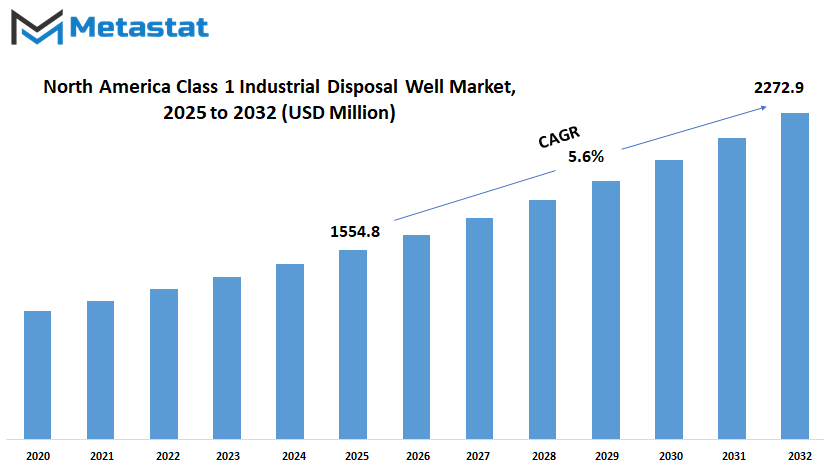
GROWTH FACTORS
The North America Class 1 Industrial Disposal Well market will show continuous growth in future times. Expansion of industrial activities in the country, especially in manufacturing and chemical production sectors, becomes a subject of increasing needs for a reliable and safe disposal method. The well is one of the most essential solutions in terms of disposal of liquid waste, which cannot be managed on the surface. They are wells that inject waste deep underground so that they are far below the drinking-water aquifers and prevent the contamination of fresh water sources. They are not only to manage waste but rather consolidate the environment and public health in a practical and long-term framework.
One of the key driving factors for the growth of this market is the tighter enforcement of environmental regulations. With the increasing government and local authority standards for waste treatment, companies turn to Class 1 disposal wells as the most trusted method meeting such stringent conditions. Furthermore, industries also aim to follow safer practices due to increased public awareness regarding environmental impacts apart from current regulations. Thus, this energizes the sectors to invest in better waste management systems, raising the demand for these wells.
The other thing that propels market development is progress in drilling and monitoring technology. Better equipment and better techniques make it easier, more affordable to develop and manage disposal wells, thus increasing safety and reliability in all phases of the process, therefore creating confidence among different stakeholders. Improvements in technology will continue reducing the cost of operation, which would enable smaller industries to begin using this method in waste disposal.
On the other hand, some challenges might reduce the pace of such growth. The initial cost for establishing a disposal well is very high, and not all firms have sufficient funds to invest in such equipment. In addition, permits may prove cumbersome with long lead times; especially in areas with strict environmental regulations or with public objection, these issues will discourage new entrants into the market as well as slow down expansion efforts.
Nevertheless, the future holds a very promising prospect. Sustainability in industries and cleaner production has spurred the development of interests in alternative solutions that are effective and eco-compliant. And, already, there are possibilities existing for further investment in the space if policymakers will promote incentives or streamline approval processes. It would spell strong growth prospects for the North America Class 1 Industrial Disposal Well market in the next few years.
Ten years will pour open an optimistic future for such openings. The shift to sustainable operations and cleaner production would make the market very keen on any environmentally efficient solutions. If the regulatory incentive or ease of approvals would end up creating more opportunities for investment in this space, this state shift would provide a very strong growth opportunity for the North America Class 1 Industrial Disposal Well market in the next few years.
MARKET SEGMENTATION
By Type
The state of affairs regarding the North America Class 1 Industrial Disposal Well market will of course vary in the years to come, not least because of evolving environmental policy and industrial demand. Technological advances also play a role here. Furthermore, these disposal wells are essential in waste management systems and enable the undertaking to lessen its influence on its environment. Each type of well serves a different purpose, and this accordingly allows the waste to accompany treatment procedures and regulatory requirements for the specific industry. The market for disposal wells is likely to become active in the future with stronger safety measures and site monitoring by industries for their waste solutions.
Hazardous Waste Injection Wells are designed for substances that may pose a perfect threat to either the public or the environment. Such wells require stringently maintained controls and constant monitoring to guard against possible leakage or contamination. Under increased public safety scrutiny, hazardous industries will likely turn even more to such controlled systems that provide containment of risk. Non-Hazardous Waste Injection Wells are going to provide quite simple and low-cost disposal of waste that has not been identified as hazardous at present. Use of such wells is well established and will likely continue to offer an effective option for many industries that produce less dangerous waste.
The Commercial Disposal Wells are not the ones designed specifically for a single industry as they answer several industries at once. As smaller companies seek to dispose of their wastes at less cost, one might see these wells being put to use more these days. Captive Industrial Disposal Well, being a waste disposal practice for a single industry or company, shall forever remain relevant to businesses that prefer to manage their waste directly. As these industrial plants advance, an increasing need for built-in waste treatment will manifest.
Deep Injection Wells are utilized as a location to isolate waste from the atmosphere by burying it beneath the earth and separating it from groundwater and other sources. The popularity of these wells may increase, given the stringency of safety norms and deeper described disposal as a more accepted mechanism of waste management. Also, although brine disposal wells have been useful in managing salty wastewater from oil and gas activities, their usage is projected to remain in existence while energy production retains a prominent place in the region.
Concerns regarding Climate change are rapidly gaining prominence because of emerging Geological Sequestration Wells. They function as wells which can store greenhouse gases like carbon dioxide temporarily. With increasing popularity in these wells towards fighting climate change, their demands may drastically rise with time. The market would expand due to the ever-growing need for these solutions to be more sustainable and as per public and governmental acceptance.
By Application
The demand for North America Class 1 Industrial Disposal Well Market will increase even more as the industries continue to evolve towards more secure and permanent options regarding liquid waste disposal. Class 1 Underground Injection Wells are underground wells used to inject hazardous or nonhazardous waste deep into the subsurface to keep the surface environment free of contamination. Such activities will push industrial institutions to adopt this preferred waste disposal method owing to projections of increased activity in the industrial sector and amplification of waste emission regulations. Demand will only increase for effective and safe waste handling, particularly for chemicals and petrochemicals as harmful products remain a constant problem in such sectors.
The more drilling and production that occurs from one oil and gas exploration well, the greater the waste that will require proper secure disposal. These wells will provide a long-term solution as far as surface storage of production becomes less viable due to land use and environmental issues. Much harmful industrial wastewater needs to be isolated from the water cycle-they need to be managed away from it. Such wells offer a future course as they take the waste to a well-controlled and monitored space underground.
In future, the pharmaceutical and medical industries will most likely produce more wastes as they develop and introduce new drugs and therapies. Appropriate disposal methods will be maintained while ensuring that no risk from contamination will occur with public health in mind. These wells may further ensure that disposal of this waste does not put communities at risk. Similarly, mining and metals industries.
AGRO-TECH and food processing will be the other sectors to which this technology will extend its benefits. With the increase in production to meet demand, the waste streams from these processes will need to be managed carefully. These are not always hazardous to the environment but require gentle handling against environmental harm. The wells may also serve as disposal for those wastes that cannot be dealt with in other conventional treatment plants.
As the focus on environmental safety tightens, even the smaller waste streams that fall under the said category of others will require attention. These could include wastes from small industries or combined wastes not grouped into a single category. The steady innovation of new materials and processes will make flexible yet dependable waste disposal in demand. The market for Class 1 Industrial Disposal Wells in North America will remain pivotal to that future.
By End User
The North America Class 1 Industrial Disposal Well market will play a pivotal role in waste management of hazardous nature in the future as industries are growing and there is more and more need to dispose of waste safely into the ground. The design of these wells is such that they are able to contain substances that can be released only in the environment, given their harmful potential. Hence, they are considered to be one of the key elements through which industries intend to carry out safe deep well injection of liquid waste while limiting any interaction with humans and ecosystems. Such demand for this type of disposal is expected to grow as environmental regulators become more stringent on the companies to find safe and reliable methods to dispose of harmful byproducts.
Disposal wells to meet environmental safety regulations will be relied upon increasingly by the oil and gas, chemical, petrochemical, mining, and metals industries in the future, as they expand their operations. These industries produce a substantial waste load, which must be dealt with while protecting human health and the environment. Further upgrades will be made to the technology used for such wells in deeper and enhanced containment and monitoring systems. This technology not only eliminates risks to the environment but also allows companies to comply with stricter regulations.
Pharma and bio tech companies will also occupy much space in this market. The more innovative the fields become, the more specialized handling of the waste overtakes. Disposal Wells will be preferred because they are a great way to contain hazardous liquids permanently. Similar will occur for this system for food and beverage processing plants, especially as requirements lay down stricter with regard to hygiene and environmental responsibility.
Hazardous waste management companies probably will expand their services, working closely with industrial plants to offer affordable, effective disposal avenues. With the need for environmental safety awareness increased, even smaller industrial manufacturing plants will adopt these techniques. Other kinds, including niche sectors that aren't typically considered to cause heavy generation of wastes, could also be seen in the picture, as industries change because of evolution, and as unexpected sources of hazardous wastes emerge.
Public awareness will also help in the North America Class 1 Industrial Disposal Well Market in the future and mix with regulations to shape it. The future will be different as they also need to invest in the infrastructures that permit long-term waste control. And market growth will happen, yet this will also be considered during the industrial future with responsible development. Indeed, as pressure mounts for sustainability practices to become mainstream, safe disposal will not even be optional across even more industries.
|
Forecast Period |
2025-2032 |
|
Market Size in 2025 |
$1554.8 million |
|
Market Size by 2032 |
$2272.9 Million |
|
Growth Rate from 2025 to 2032 |
8.0% |
|
Base Year |
2024 |
|
Regions Covered |
US, Canada, Mexico |
REGIONAL ANALYSIS
Over the years, the North America Class 1 Industrial Disposal Well Market is anticipated to flourish due to regulatory demands and growing industries. The market will primarily focus on safe and permanent disposal of hazardous waste underground, thus being important for environmental safety and the production industries having heavy waste generation during operations. Even while sustainable development is being considered by different industries, these disposal wells will take more of an important place.
In the future, shifting environmental policies and advancements in drilling and monitoring technologies will shape the future of this market. Governments and environmental agencies are now more focused on enactment of stricter disposal regulation measures to protect the natural resources. The increase in this scrutiny has pushed industries towards seeking disposal solutions that are more reliable and compliant, a situation that may strengthen demand for Class 1 wells, which typically serve to dispose of the very hazardous industrial waste with the least contamination risk to surrounding lands and water sources.
Geographically, the North America Class 1 Industrial Disposal Well Market consists of the U.S., Canada, and Mexico. Of these, the U.S. is the most developed market within this region due to the long-standing industrial infrastructure and stringent regulatory framework in the country. With industries coming up and increasing awareness among citizens, Canada and Mexico are gradually ramping up their operations. The demand for safe waste disposal will continue to remain high in these countries as urbanization continues and industrial projects spread into new areas.
With the changing global economy, other regions such as Europe, Asia-Pacific, South America, and the Middle East & Africa are also looking forward to upgrading their waste disposal systems, just like North America. North America is different as it has more mature infrastructure and consistent investments in safety and compliance. The emphasis on sustainable industrial practices will require human efforts to proper waste-handling systems, assuring the usability of Class 1 disposal well.
In the future, however, companies in this domain will have to catch both the technological advances and the changes in regulations, keeping these changes in pace fundamental for long-term success. There seems to be emerging greater interest towards real-time monitoring, automation, and data collection, making the operations much efficient and transparent. These trends will enable the North America Class 1 Industrial Disposal Well market to respond effectively and competitively to both environment.
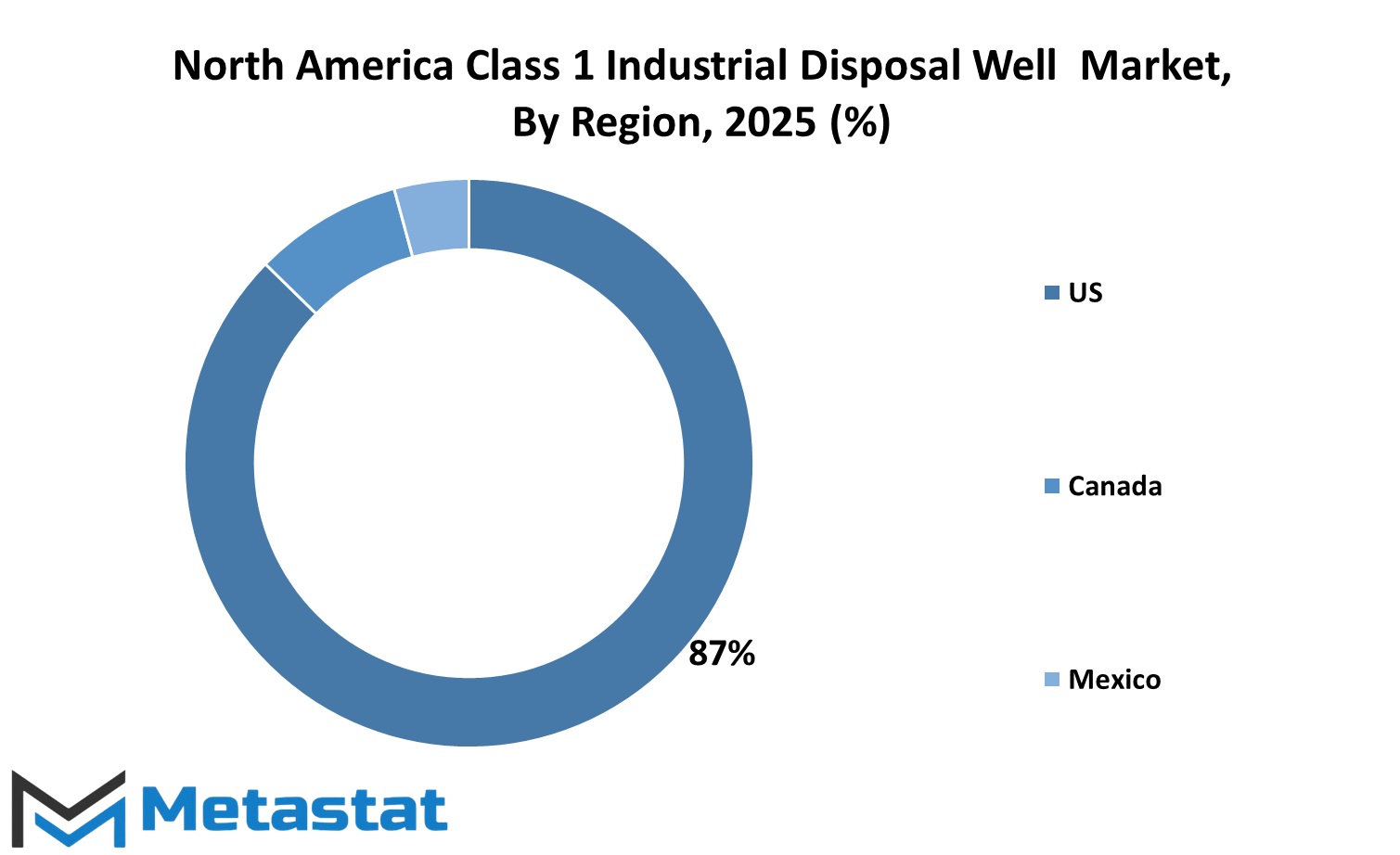
COMPETITIVE PLAYERS
We are anticipating gradual changes in the North America Class 1 Industrial Disposal Well Market with the increase of environmental concern and industrial activity. Companies in this business are adjusting their business strategies according to the ever-tightening regulations and growing demand for safe long-term waste disposal solutions. Disposal wells within this classification are designed to accommodate hazardous and non-hazardous liquid waste, which cannot be treated using conventional surface methods. As industries seek safer and more effective means for waste management, the importance of such systems will only increase. This demand will pose increasing pressure on companies in the field to invest in better technology and compliance systems.
Many competitors are shaping the market's future. SCS & E is one company identified with advanced environmental regeneration services and has shown much flexibility in adapting to changing regulations and public expectations. Others, such as VLS Environmental Solutions, LLC, and Mid-Way Environmental, are making a mark with trustworthy and customized waste handling solutions. Waste management companies would therefore prepare for an uncertain future in terms of changing governmental policymaking and shifting public attitudes rather than just for those that respond to the present-day issues.
The need now caused pressure to urge companies like WSP North America, Inc. and Advantek Waste Management Services LLC to develop their technical know-how and upgrade their facilities. These new technologies would likely involve the concepts of monitoring, injecting, and sealing waste deep underground to minimize environmental risks. There is also a growing expectation for greater dialogue with the public and should compel these companies to invest in reporting and safety mechanisms. Areas of opportunity for Legacy Materials Management and Union Processing Systems, LLC lie in a focus on reliability and innovation, with the promise of appealing to industrial clients seeking comfort over the peace of mind of their waste disposal practices. Thus, in the view of these companies, beyond technical deadlines, there is probably an ample urge for rapid change.
Partnerships and acquisitions may also play a formative role as the North American Class 1 Industrial Disposal Well market advances. Companies may band together for pooling resources or more effective entry into new sectors. This avenue may, through LEL Environmental, Ltd. and others, be pursued for expanding reach or augmenting technological prowess. In the days to come, market competition shall probably be harbored by who provides the most, yet perhaps quite differently, by who can do it the safest, the fastest, and, cavalier-wise, the most responsibly.
North America Class 1 Industrial Disposal Well Market Key Segments:
By Type
- Hazardous Waste Injection Wells
- Non-Hazardous Waste Injection Wells
- Commercial Disposal Wells
- Captive Industrial Disposal Wells
- Deep Injection Wells
- Brine Disposal Wells
- Geological Sequestration Wells
- Others
By Application
- Chemical and Petrochemical Waste Disposal
- Oil & Gas Exploration and Production Waste
- Industrial Wastewater Management
- Pharmaceutical and Medical Waste Disposal
- Mining and Metals Waste Disposal
- Agricultural and Food Processing Waste
- Hazardous Liquid Waste Management
- Others
By End User
- Oil & Gas Companies
- Chemical and Petrochemical Industries
- Mining and Metals Companies
- Industrial Manufacturing Plants
- Pharmaceutical and Biotechnology Companies
- Food & Beverage Processing Plants
- Hazardous Waste Management Firms
- Others
Key North America Class 1 Industrial Disposal Well Industry Players
- SCS Engineers
- VLS Environmental Solutions, LLC
- Mid-Way Environmental
- Advantek Waste Management Services LLC
- Legacy Materials Management
- Union Processing Systems, LLC
- LEL Environmental Ltd.
- WSP North America, Inc.
- Veolia Environnement S.A.
WHAT REPORT PROVIDES
- Full in-depth analysis of the parent Industry
- Important changes in market and its dynamics
- Segmentation details of the market
- Former, on-going, and projected market analysis in terms of volume and value
- Assessment of niche industry developments
- Market share analysis
- Key strategies of major players
- Emerging segments and regional growth potential



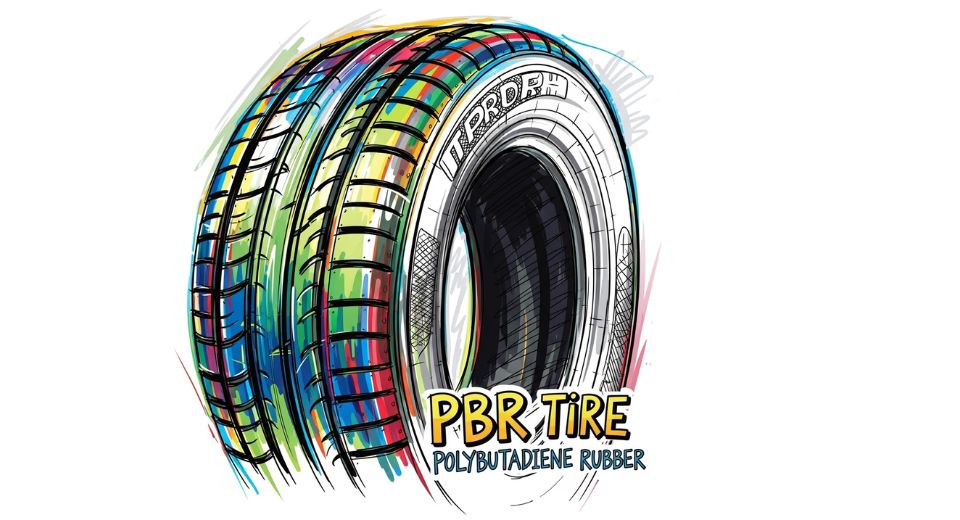
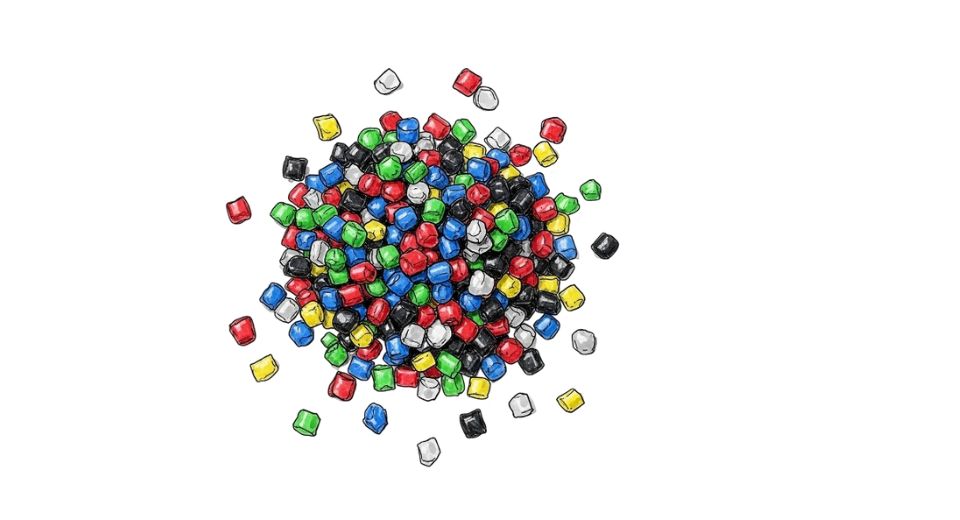
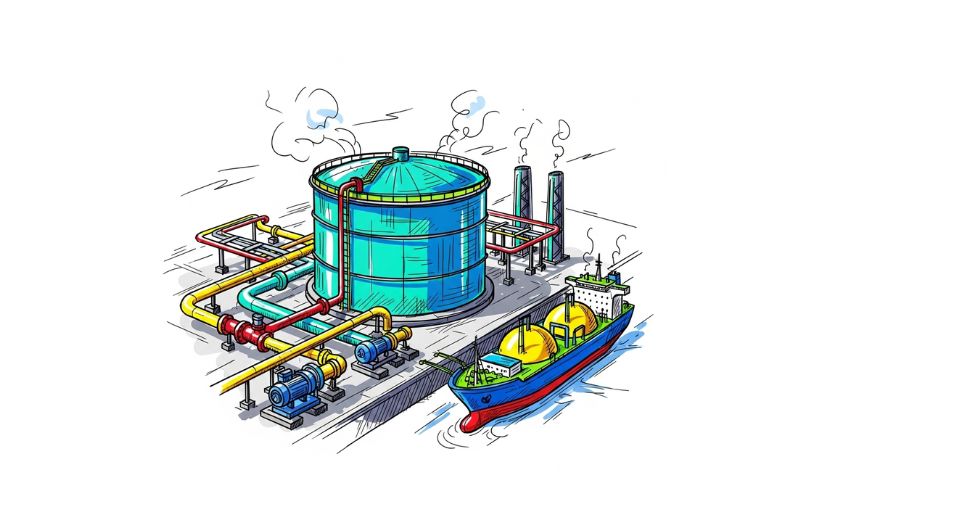
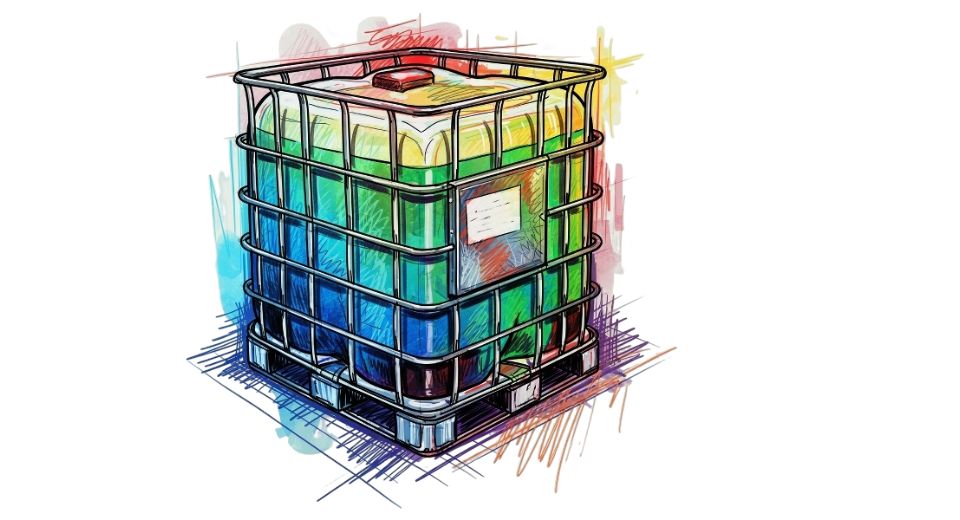

 US: +1 3023308252
US: +1 3023308252






